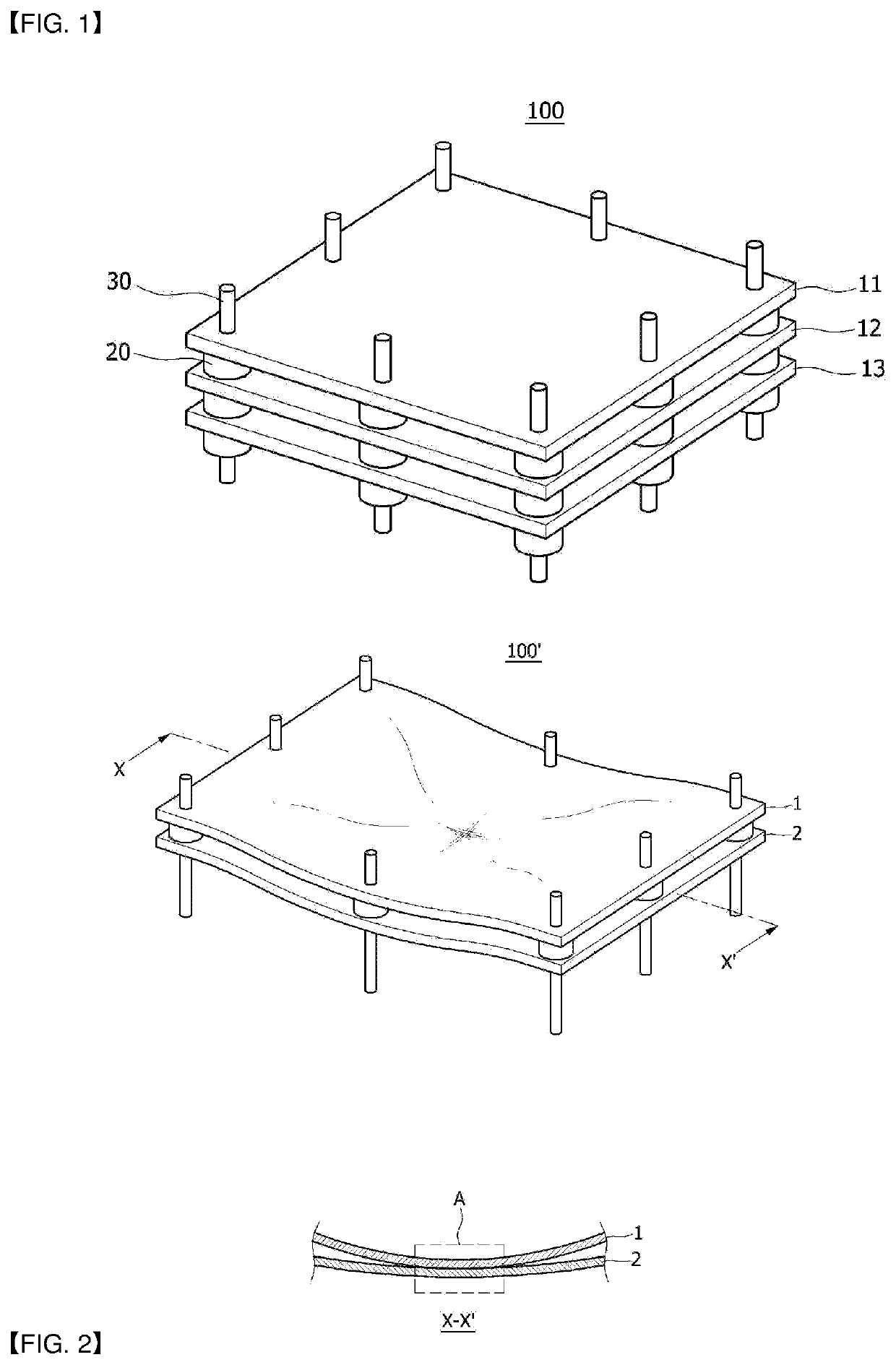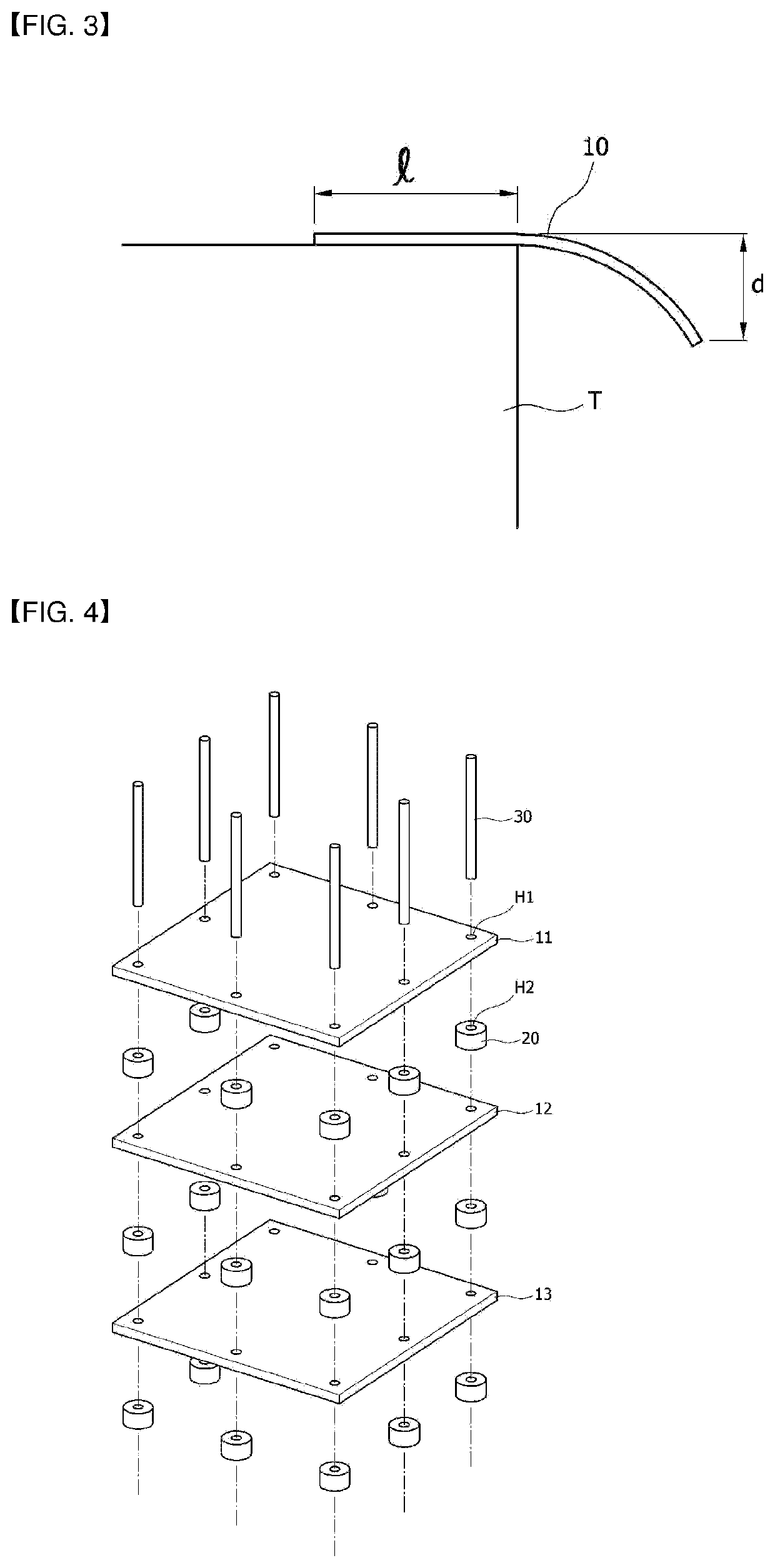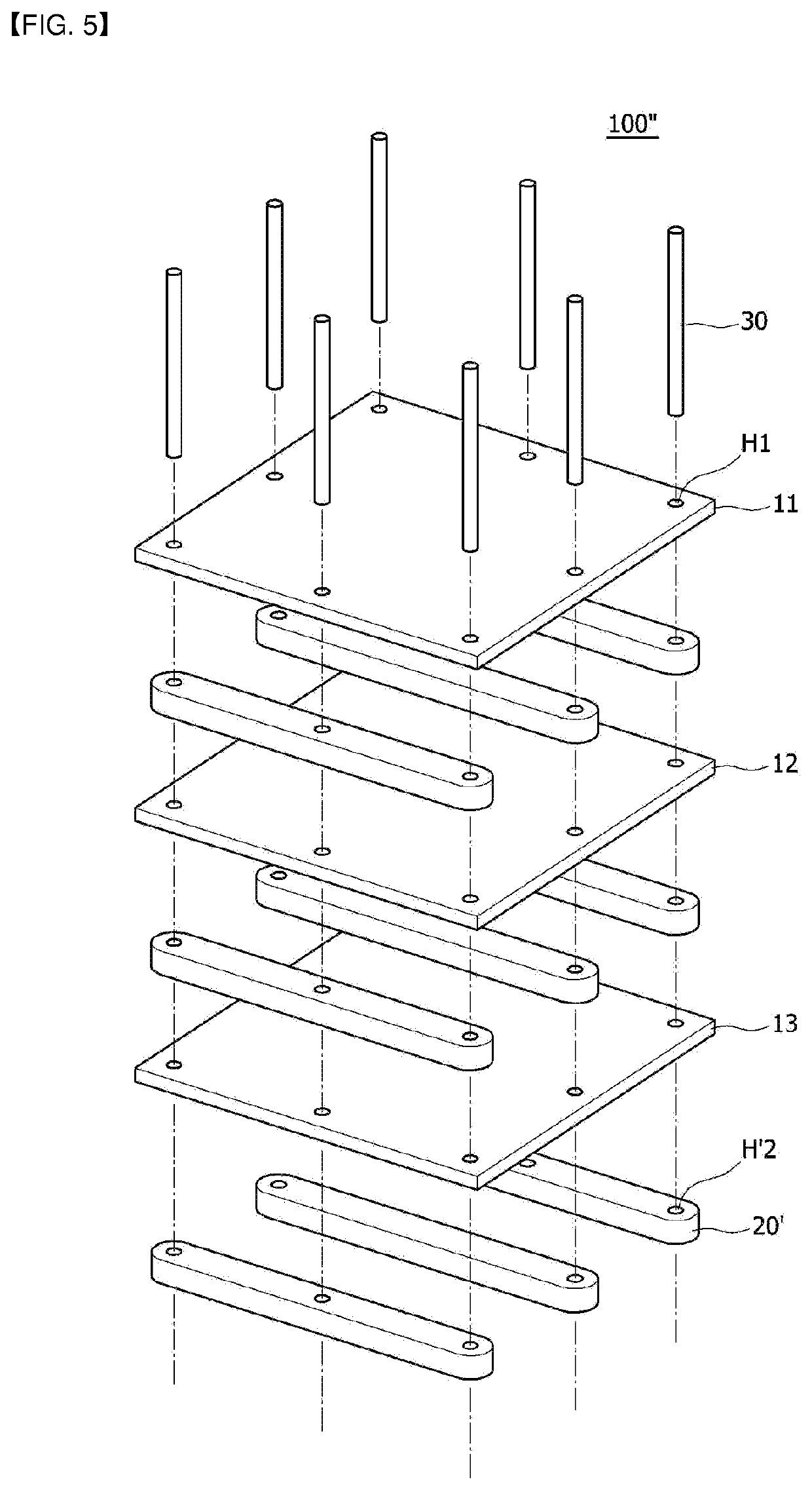Cell culture sheet assembly for large-capacity incubator, and large-capacity incubator comprising same
a technology of cell culture sheet and incubator, which is applied in the direction of microorganism fixing/supporting apparatus, microorganism sterilization, microorganism fixing/supporting apparatus, etc., can solve the problems of large influence of its own weight, limited area of scaffold, and large scaffold area, etc., to achieve stable cultivation, low sagging or shape deformation, and continuous and smooth maintenance
- Summary
- Abstract
- Description
- Claims
- Application Information
AI Technical Summary
Benefits of technology
Problems solved by technology
Method used
Image
Examples
example 1
[0090]A fiber web formed of PVDF fibers having an average diameter of 260 nm, and having a basis weight of 4.5 g / m2, and a thickness of 5 μm was prepared. After the fiber web was laminated so as to be brought into contact with a surface of a polycarbonate (PC) film having a thickness of 450 μm and provided with the silicone-based adhesive on one surface thereof, a cell culture sheet as shown in the following Table 2 was manufactured as an integrated laminate type that was attached using a coating machine (digital-3500plus) at room temperature.
examples 2 to 7
[0091]A cell culture sheet was manufactured in the same manner as in Example 1, but a cell culture sheet as shown in the following Table 2 was manufactured by changing the material for the cell culture sheet, the structural specifications, and the like as in the following Table 2.
experimental example 1
[0093]After the manufactured cell culture sheet was punched into a length and width of 18 cm and 3 cm, respectively, in a state where a first portion l, which is a region from any one corner perpendicular to a longitudinal direction of a punched specimen to a first line which is 12.5 cm away from the corner in a longitudinal direction, is pressed with a zig having a weight of 500 g and fixed to the upper surface of a table T as illustrated in FIG. 3, how much the remaining 5.5 cm portion in the longitudinal direction was bent by its own weight was measured, and the bending depth is shown in the following Table 2. Specifically, a bending depth d was measured as a vertical distance from the upper surface of the first part l to the upper corner of the tip of the remaining part bent portion. In addition, in order to evaluate the bending depth under high temperature and high pressure conditions, the cell culture sheet was punched to the same size, and then allowed to stand at 121° C. and...
PUM
| Property | Measurement | Unit |
|---|---|---|
| area | aaaaa | aaaaa |
| vertical distance | aaaaa | aaaaa |
| thickness | aaaaa | aaaaa |
Abstract
Description
Claims
Application Information
 Login to View More
Login to View More - R&D
- Intellectual Property
- Life Sciences
- Materials
- Tech Scout
- Unparalleled Data Quality
- Higher Quality Content
- 60% Fewer Hallucinations
Browse by: Latest US Patents, China's latest patents, Technical Efficacy Thesaurus, Application Domain, Technology Topic, Popular Technical Reports.
© 2025 PatSnap. All rights reserved.Legal|Privacy policy|Modern Slavery Act Transparency Statement|Sitemap|About US| Contact US: help@patsnap.com



